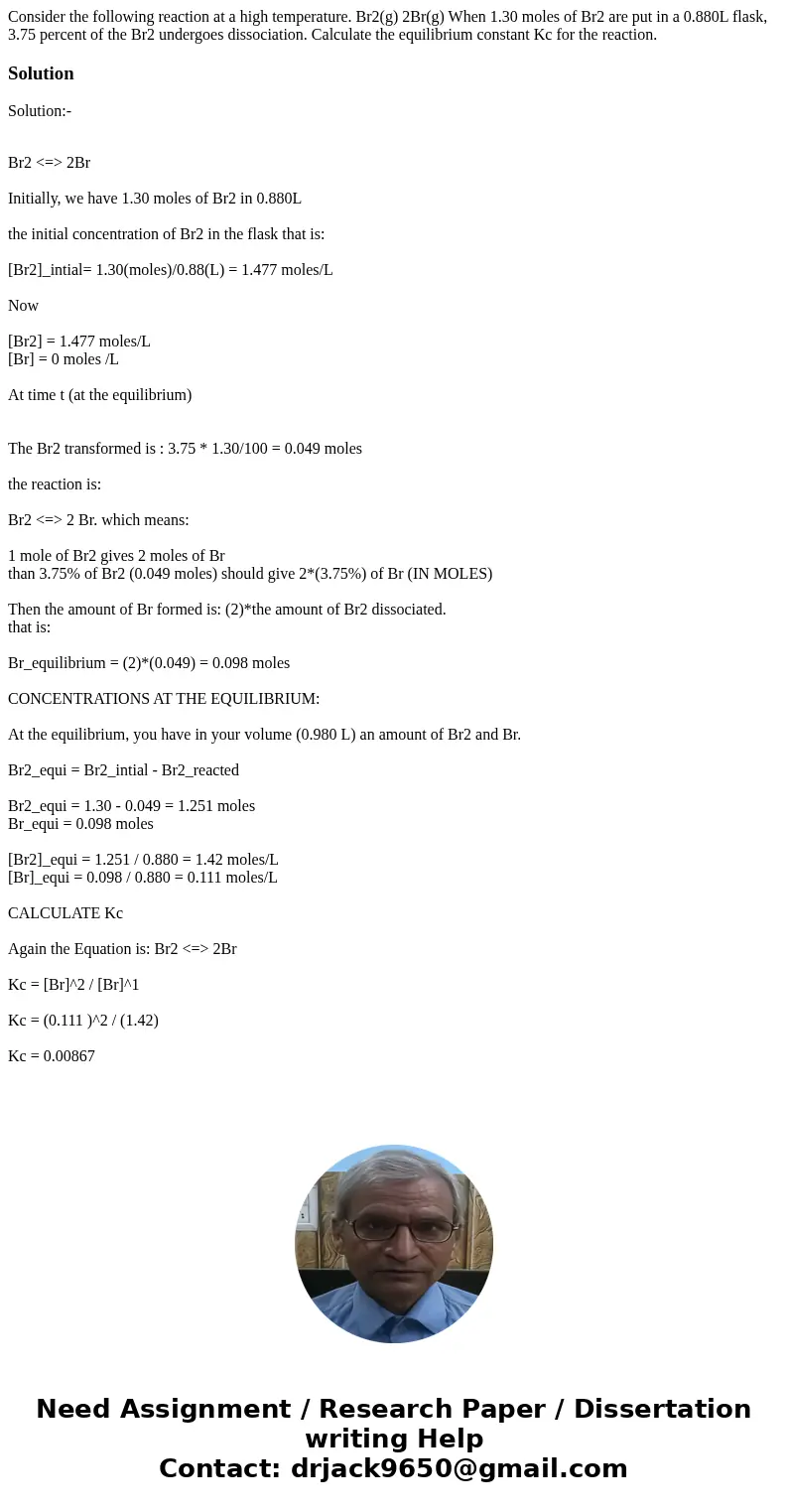Consider the following reaction at a high temperature Br2g 2
Consider the following reaction at a high temperature. Br2(g) 2Br(g) When 1.30 moles of Br2 are put in a 0.880L flask, 3.75 percent of the Br2 undergoes dissociation. Calculate the equilibrium constant Kc for the reaction.
Solution
Solution:-
Br2 <=> 2Br
Initially, we have 1.30 moles of Br2 in 0.880L
the initial concentration of Br2 in the flask that is:
[Br2]_intial= 1.30(moles)/0.88(L) = 1.477 moles/L
Now
[Br2] = 1.477 moles/L
[Br] = 0 moles /L
At time t (at the equilibrium)
The Br2 transformed is : 3.75 * 1.30/100 = 0.049 moles
the reaction is:
Br2 <=> 2 Br. which means:
1 mole of Br2 gives 2 moles of Br
than 3.75% of Br2 (0.049 moles) should give 2*(3.75%) of Br (IN MOLES)
Then the amount of Br formed is: (2)*the amount of Br2 dissociated.
that is:
Br_equilibrium = (2)*(0.049) = 0.098 moles
CONCENTRATIONS AT THE EQUILIBRIUM:
At the equilibrium, you have in your volume (0.980 L) an amount of Br2 and Br.
Br2_equi = Br2_intial - Br2_reacted
Br2_equi = 1.30 - 0.049 = 1.251 moles
Br_equi = 0.098 moles
[Br2]_equi = 1.251 / 0.880 = 1.42 moles/L
[Br]_equi = 0.098 / 0.880 = 0.111 moles/L
CALCULATE Kc
Again the Equation is: Br2 <=> 2Br
Kc = [Br]^2 / [Br]^1
Kc = (0.111 )^2 / (1.42)
Kc = 0.00867

 Homework Sourse
Homework Sourse